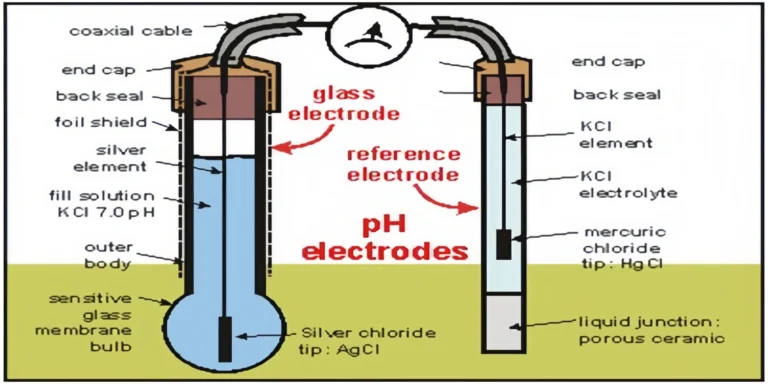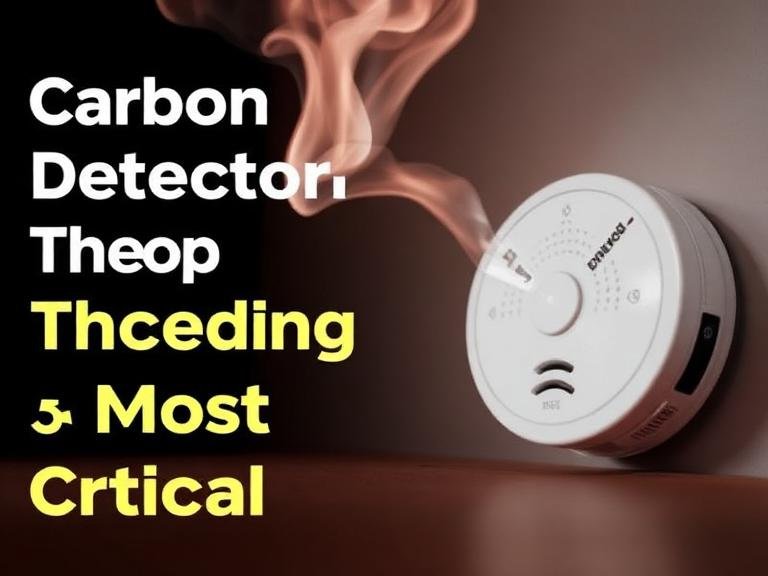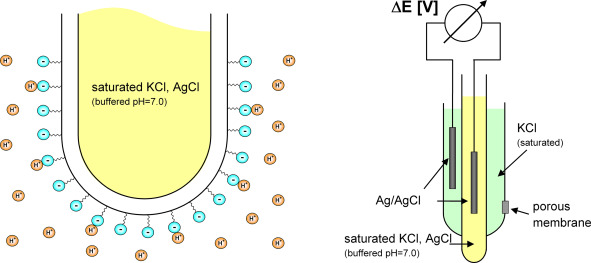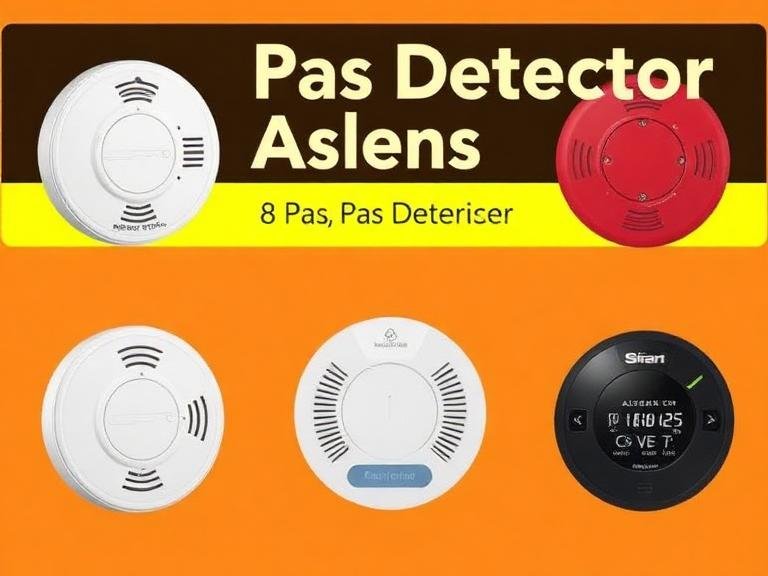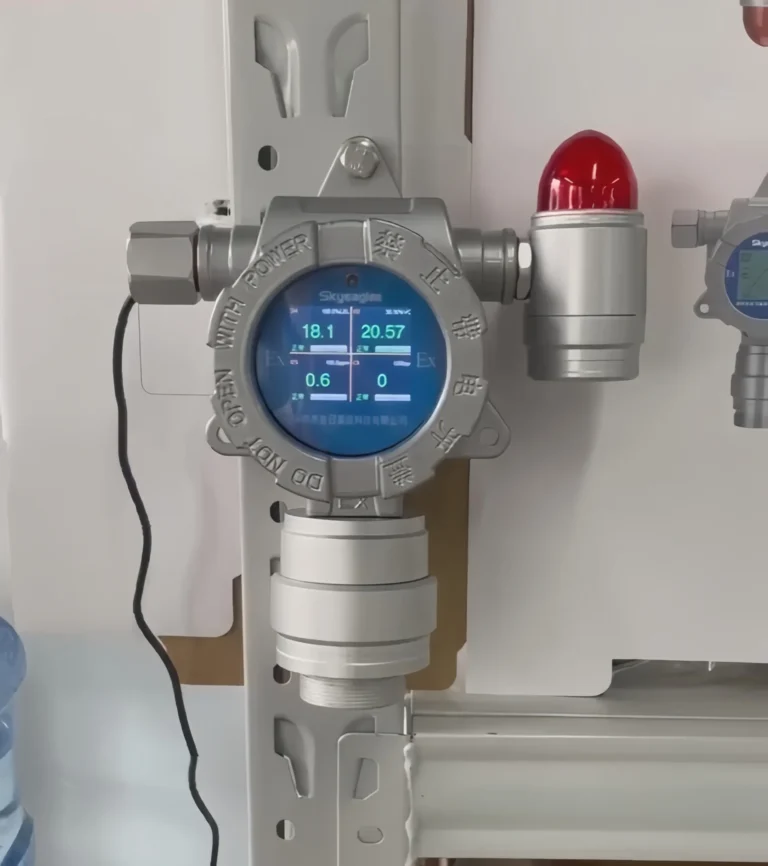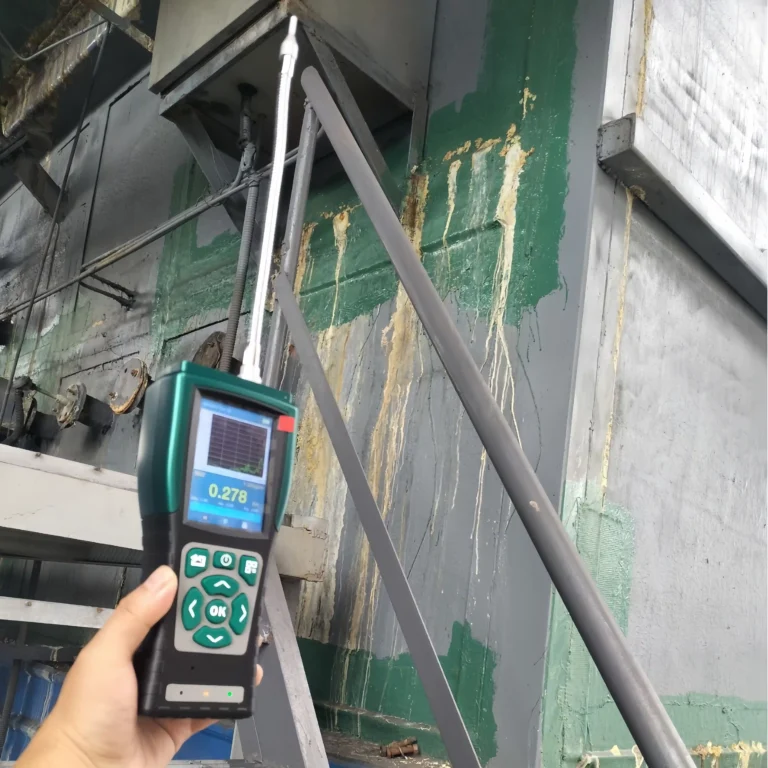Effective chlorine detection is an essential requirement in numerous industrial and municipal sectors, including water treatment plants, chemical plants, and pulp and paper mills. We will comprehensively explore the key factors in selecting, implementing, and maintaining chlorine detectors. We will delve into the fundamental principles of various sensor technologies, such as electrochemical, metal-oxide-semiconductor, and photoionization technologies, analyzing their respective operating principles, sensitivity, and limitations.
We will also extend to practical operational aspects, such as determining appropriate detection ranges, understanding accuracy specifications, and assessing the impact of environmental factors such as temperature, humidity, and cross-contamination gases. Furthermore, we will discuss the integration of alarm and data logging systems, outline calibration and routine maintenance procedures, and emphasize the importance of regulatory compliance and safety certification.
Our goal is to equip engineers, safety managers, and technicians with the necessary depth of understanding to make informed decisions and ensure the protection of personnel and assets from the hazards of chlorine exposure.

Understanding the Nature of Chlorine: A Prerequisite for Detection
What is chlorine? To the chemist, it is the 17th element on the periodic table, a halogen with a powerful affinity for electrons. To the industrialist, it is a foundational building block for countless products, from PVC plastics to pharmaceuticals. To the public health official, it is the guardian of water supplies, a disinfectant that has saved countless lives from waterborne diseases. Yet, to the safety professional, chlorine (Cl₂) presents a profound and immediate hazard. It is a greenish-yellow gas, heavier than air, with a sharp, acrid odor reminiscent of bleach, though relying on one’s sense of smell is a dangerously unreliable method of detection.
Chlorine’s danger lies in its reactivity. When inhaled, it reacts with the moisture present in the mucous membranes of the respiratory tract—the eyes, throat, and lungs—to form hydrochloric acid (HCl) and hypochlorous acid (HOCl). These acids are corrosive and cause cellular damage, leading to inflammation, fluid buildup in the lungs (pulmonary edema), and severe respiratory distress.
The U.S. Occupational Safety and Health Administration (OSHA) has set a permissible exposure limit (PEL) ceiling of 1 part per million (ppm) for chlorine, meaning no worker should be exposed to a concentration above this level at any time (OSHA, n.d.). The National Institute for Occupational Safety and Health (NIOSH) recommends a lower 15-minute short-term exposure limit (STEL) of 0.5 ppm and identifies 10 ppm as Immediately Dangerous to Life or Health (IDLH).
Imagine the gas as a dense, low-lying fog. Being approximately 2.5 times heavier than air, a release of chlorine gas will not readily disperse upwards. Instead, it will sink, flowing along the ground and settling in low-lying areas like pits, trenches, and basements. This physical property dictates where a fixed chlorine detector must be placed—typically low to the ground, in areas where the gas is most likely to accumulate. Understanding this behavior is not merely an academic exercise; it is the first step in designing an effective safety net. The selection of a proper chlorine gas monitor is therefore an act of translating this chemical and physical knowledge into an electromechanical sentinel.
Check 1: A Deep Dive into Chlorine Gas Detector Sensor Technologies
The heart of any chlorine gas detector is its sensor. This is the component that performs the critical transformation of a chemical presence into a measurable electrical signal. The choice of sensor technology is perhaps the single most consequential decision in this entire process, as it dictates the instrument’s sensitivity, selectivity, response time, and lifespan. Let us explore the primary technologies available for chlorine detection with the care and detail they deserve.
Electrochemical (EC) Sensors: The Industry Standard
Think of an electrochemical sensor as a tiny, specialized fuel cell. It is designed to generate a current that is directly proportional to the concentration of a target gas. For a chlorine detector, the sensor typically consists of two or three electrodes (a sensing electrode, a counter electrode, and sometimes a reference electrode) immersed in an electrolyte.
When chlorine gas molecules diffuse through a membrane and reach the sensing electrode, a chemical reaction—specifically, a reduction reaction—occurs. The chlorine molecules are reduced, consuming electrons from the electrode. For example, a simplified reaction is: Cl₂ + 2e⁻ → 2Cl⁻. Simultaneously, an oxidation reaction occurs at the counter electrode to balance the flow of electrons. This movement of electrons between the electrodes creates a small electrical current. An external circuit measures this current, and after amplification and processing, displays it as a gas concentration in parts per million (ppm).
The elegance of this design lies in its high sensitivity and low power consumption, making EC sensors ideal for both fixed and portable battery-powered devices. They can reliably detect chlorine at the sub-ppm levels required by safety regulations. However, their nature also presents challenges. The primary challenge is cross-sensitivity. Other oxidizing or reducing gases can also react at the electrode surface, creating a current and causing a false reading. For instance, nitrogen dioxide (NO₂) is a common interferent that can produce a positive response on a chlorine sensor. A well-designed chlorine gas detector will incorporate chemical filters to scrub out these interfering gases before they reach the sensor, a feature that speaks to the quality of the instrument’s design.
The electrolyte within the sensor can dry out in low-humidity environments or become diluted in high-humidity conditions, affecting performance. Likewise, extreme temperatures can alter the rate of the chemical reaction, requiring temperature compensation circuitry, a standard feature in any reputable modern device. The sensor also has a finite lifespan, typically 1 to 3 years, as the electrodes and electrolyte are gradually consumed.
Metal-Oxide-Semiconductor (MOS) Sensors
MOS sensors operate on a completely different principle. They utilize a heated metal oxide film, commonly tin dioxide (SnO₂), as the sensing element. In clean air, oxygen from the atmosphere adsorbs onto the surface of the heated oxide, trapping electrons from the material and creating a high-resistance state.
When a reducing gas like chlorine comes into contact with the sensor surface, it reacts with the adsorbed oxygen, releasing the trapped electrons back into the metal oxide. This release of electrons increases the material’s conductivity, or, conversely, decreases its resistance. The change in resistance is measured and correlated to the gas concentration.
The main advantage of MOS sensors is their long lifespan (often 5+ years) and robustness against harsh environmental conditions. They are less prone to the “poisoning” that can affect other sensor types. However, their significant drawbacks for chlorine detection are a general lack of selectivity and higher power consumption due to the need for a heater.
A MOS sensor will respond to a wide range of combustible and toxic gases, making it difficult to discern if the alarm is due to chlorine or another substance without further analysis. Their sensitivity at the low ppm levels required for chlorine safety is also generally lower than that of electrochemical sensors. For this reason, MOS sensors are more commonly used for detecting high concentrations of combustible gases rather than for low-level toxic gas monitoring.

A Comparative Look at Sensor Technologies
To consolidate our understanding, let’s arrange the key characteristics of these sensor types into a comparative framework. This allows for a more direct and analytical appraisal of their suitability for the specific task of chlorine detection.
| Feature | Electrochemical (EC) Sensor | Metal-Oxide-Semiconductor (MOS) Sensor |
| Operating Principle | Gas reacts with an electrode in an electrolyte, producing a current. | Gas reacts with a heated metal oxide surface, changing its resistance. |
| Selectivity | Good to excellent, especially with filters. Can be prone to specific cross-sensitivities. | Poor. Responds to a wide range of combustible and reducing gases. |
| Sensitivity | Excellent. Can detect chlorine at sub-ppm levels (ppb to low ppm). | Fair to poor. Typically used for higher concentrations (>10 ppm). |
| Response Time | Fast (typically 30-60 seconds for T90). | Moderate (can be slower than EC sensors). |
| Power Consumption | Very low. Ideal for portable, battery-operated devices. | High due to the internal heater. Primarily for fixed systems. |
| Lifespan | Limited (typically 1-3 years) due to consumption of reagents. | Long (often 5+ years). |
| Cost | Moderate initial cost; requires periodic sensor replacement. | Low to moderate initial cost; lower replacement frequency. |
| Ideal Application | Low-ppm toxic gas safety, including chlorine leak detection. | High-concentration combustible gas detection; general air quality. |
As the table illustrates, the electrochemical sensor emerges as the most fitting technology for the precise and sensitive task of monitoring for hazardous levels of chlorine. Its ability to detect the gas at the very low concentrations mandated by safety standards makes it the prevailing choice in the field.
Check 2: Defining Detection Range, Resolution, and Accuracy
Once we have settled on the appropriate sensor technology—most likely electrochemical—we must then turn our attention to the performance specifications of the chlorine gas detector itself. These are not arbitrary numbers on a data sheet; they are the very language that describes the instrument’s capability to perceive and report on the reality of its environment. The key terms to master here are range, resolution, and accuracy.
Selecting the Correct Detection Range
The detection range defines the minimum and maximum concentrations the instrument can measure, typically expressed in ppm. A common range for a chlorine detector might be 0-10 ppm, 0-20 ppm, or 0-50 ppm. How do you choose the right one?
The decision must be rooted in a risk-based assessment of your facility. Consider the potential leak scenarios. Are you monitoring the ambient air in a large storage area, where a small leak might result in a diffuse, low concentration? Or are you monitoring a specific valve or connection point, where a failure could lead to a localized, higher concentration?
A good practice is to select a range where your critical alarm setpoints fall within the lower half of the scale. For chlorine, your low alarm might be set at the NIOSH STEL of 0.5 ppm, and your high alarm at the OSHA PEL of 1 ppm. For a detector with a 0-10 ppm range, these setpoints are comfortably within the lower portion of its measurement capability, where the instrument is often most accurate and responsive.
Choosing a detector with an unnecessarily wide range, such as 0-100 ppm, for a general area monitoring application could be a mistake. While it seems to offer more “headroom,” it often comes at the cost of lower resolution and potentially reduced accuracy at the critical low-end concentrations you care most about. You are essentially using a yardstick to measure a grain of sand.
Understanding Resolution and Accuracy
Resolution refers to the smallest change in concentration that the instrument can display. A detector with a 0-10 ppm range might have a resolution of 0.1 ppm, meaning its display will read in increments of 0.1, 0.2, 0.3, and so on. A higher-end instrument might offer a resolution of 0.01 ppm. While higher resolution seems better, it is only meaningful if it is backed by corresponding accuracy.
Accuracy is a statement of how close the instrument’s reading is to the true concentration of the gas. It is often expressed as a percentage of the reading or a fixed ppm value, for example, “±2% of reading or ±0.1 ppm, whichever is greater.” Let’s dissect this. If the true concentration is 5 ppm, a ±2% accuracy means the reading could be anywhere from 4.9 ppm to 5.1 ppm. If the true concentration is very low, say 0.5 ppm, the ±0.1 ppm term might dominate. A 2% error on 0.5 ppm is only 0.01 ppm, but the specification guarantees the reading will be within 0.4 ppm to 0.6 ppm.
It is a profound error to conflate resolution with accuracy. A device can have a very fine resolution (e.g., 0.01 ppm) but be wildly inaccurate, displaying a precise-looking number that is far from the truth. Always prioritize the accuracy specification, as it is the true measure of the detector’s trustworthiness. A reliable gas detection and gas analysis solutions provider will be transparent about these specifications and help you interpret them in the context of your safety goals.
Check 3: Evaluating Environmental and Operational Conditions
A chlorine gas detector does not operate in a vacuum. It is a physical object placed within a dynamic, and often challenging, industrial environment. The ambient conditions can have a significant impact on its performance and longevity. A failure to account for these conditions is a failure in the design of your safety system.
The Influence of Temperature and Humidity
As we touched upon with electrochemical sensors, temperature and humidity are not passive bystanders. Extreme temperatures, both high and low, can affect the viscosity of the electrolyte and the kinetics of the chemical reaction within the sensor, leading to measurement drift. A quality chlorine detector will have built-in temperature compensation algorithms that use a thermistor to measure the ambient temperature and adjust the output signal accordingly. Always check the manufacturer’s specified operating temperature range (e.g., -20°C to +50°C) and ensure it aligns with the conditions at your installation site.
Humidity presents a similar challenge. In very dry conditions, the water-based electrolyte in an EC sensor can evaporate over time, reducing sensor life and sensitivity. Conversely, in very high humidity, the electrolyte can absorb excess water, becoming diluted and causing a negative drift in the reading. Some manufacturers offer sensors specifically designed for extreme humidity ranges, which may be a necessary investment for tropical climates or applications near steam vents.
The Problem of Cross-Sensitivity and Interfering Gases
Selectivity is the sensor’s ability to detect only the target gas without being fooled by others. This is where the concept of cross-sensitivity becomes paramount. As mentioned, many EC sensors for chlorine are also sensitive to other oxidizing gases. The presence of these gases can lead to false alarms, which not only disrupt operations but also erode workers’ trust in the safety system—a phenomenon known as “alarm fatigue.”
It is your responsibility to conduct a chemical inventory of the area where the chlorine detector will be installed. What other gases or vapors might be present, even in trace amounts? Common interferents for chlorine sensors include:
- Nitrogen Dioxide (NO₂)
- Ozone (O₃)
- Hydrogen Sulfide (H₂S) – can cause a negative (downscale) response
- Sulfur Dioxide (SO₂)
- Hydrogen (H₂)
A reputable manufacturer will provide a detailed cross-sensitivity chart for their chlorine gas monitor. This table is not just fine print; it is a critical operational guide.
| Interfering Gas | Typical Concentration | Cross-Sensitivity Response on Chlorine Sensor |
| Nitrogen Dioxide (NO₂) | 10 ppm | ≈ +10 ppm (i.e., 100% cross-sensitive) |
| Hydrogen Sulfide (H₂S) | 25 ppm | ≈ -5 ppm (i.e., -20% cross-sensitive) |
| Hydrogen Cyanide (HCN) | 10 ppm | ≈ +1 ppm (i.e., 10% cross-sensitive) |
| Sulfur Dioxide (SO₂) | 20 ppm | ≈ +1 ppm (i.e., 5% cross-sensitive) |
| Hydrogen (H₂) | 100 ppm | ≈ +1 ppm (i.e., 1% cross-sensitive) |
This table demonstrates why knowing your environment is so important. If your process could also release nitrogen dioxide, a standard chlorine sensor would be functionally useless, as it cannot distinguish between the two. In such cases, you must select a detector that incorporates effective internal filters to remove the interfering gas or uses a different sensing technology that is not susceptible to that specific interferent.
Ingress Protection (IP) and Hazardous Area Ratings
Finally, consider the physical robustness of the detector’s housing. The Ingress Protection (IP) rating is a standardized system that classifies the degree of protection provided by an enclosure against the intrusion of solid objects (like dust) and liquids (like water). The first digit relates to solids, and the second to liquids. A common rating for an industrial detector is IP66, which means it is “dust tight” and protected against “powerful water jets.” For an outdoor installation or in an area subject to washdowns, a high IP rating is not a luxury; it is a necessity.
If the chlorine detector is to be installed in an area where flammable gases or dusts may be present, it must also have the appropriate hazardous area certification. In Europe, this is the ATEX directive; in North America, it is typically UL or CSA certification. These certifications ensure the device’s design prevents it from becoming a source of ignition in an explosive atmosphere.

Check 4: Assessing Alarms, Outputs, and System Integration
A chlorine detector that silently measures gas without communicating its findings is of little practical use. The true value of a continuous chlorine gas monitor lies in its ability to alert personnel and trigger automated responses when a dangerous condition arises. This requires a careful examination of its alarm functions, output signals, and capacity for integration into a larger plant control system.
Local Alarms: Visual and Audible Annunciation
The most immediate form of alert is the local alarm on the device itself. A well-designed detector should provide both visual and audible alarms that are distinct and impossible to ignore.
- Visual Alarms: These are typically high-intensity LEDs, often flashing in different colors or patterns to indicate different alarm levels (e.g., flashing yellow for a low alarm, flashing red for a high alarm). The placement and brightness should be sufficient to be seen from a distance, even in brightly lit or dimly lit areas.
- Audible Alarms: The standard is a piezoelectric horn that produces a loud, piercing sound, typically greater than 85 or 95 decibels (dB) at a specified distance. The sound should be easily distinguishable from other ambient industrial noises. Some models offer different tones for different alarm levels.
It is essential to have at least two configurable alarm setpoints. A “Low” alarm provides an early warning, prompting investigation. A “High” alarm indicates a more serious situation requiring immediate evacuation or emergency response. A third “STEL” or “TWA” (Time-Weighted Average) alarm may also be available, which triggers if the average exposure over a set period exceeds regulatory limits.
Signal Outputs for Remote Monitoring and Control
While local alarms are vital for personnel in the immediate vicinity, a modern safety strategy requires centralized monitoring. This is achieved through the detector’s signal outputs.
The most common output is the 4-20 mA analog signal. This is a robust and long-standing industry standard for process instrumentation. In this system, a 4 mA signal represents a zero gas reading (0 ppm), and a 20 mA signal represents the full-scale reading (e.g., 10 ppm). The values in between are linearly proportional to the gas concentration. For instance, in a 0-10 ppm detector, a 12 mA signal would correspond to a 5 ppm concentration.
A key advantage of the 4-20 mA loop is that a signal below 4 mA (e.g., 0 mA) indicates a fault condition, such as a power failure or a cut wire, making the system inherently fail-safe. This signal is typically wired to a Programmable Logic Controller (PLC) or a Distributed Control System (DCS), allowing operators in a central control room to see the real-time gas concentration.
Another critical output is the relay output. Relays are essentially automated switches. A chlorine gas detector will typically have several relays that can be programmed to activate at different alarm setpoints. These relays can be wired to control external devices directly. For example:
- A Low alarm relay could trigger a large, remote beacon or horn.
- A High alarm relay could automatically activate an emergency ventilation system.
- A second High alarm relay could trigger an emergency shutdown (ESD) valve to stop the flow of chlorine.
Digital communication protocols like Modbus or HART are also increasingly common. These allow for more than just the gas concentration to be transmitted. They can provide detailed diagnostic information, allow for remote configuration and calibration, and simplify wiring by allowing multiple devices to be connected on a single “bus.”
The Importance of Data Logging
Many modern chlorine gas detectors include an internal data logging function. The device stores a time-stamped record of gas concentrations, alarm events, and fault conditions. This data is invaluable for several reasons. It allows for post-incident analysis to understand the duration and severity of a gas release. It provides a historical record for demonstrating regulatory compliance. It can also help identify trends, such as small, recurring leaks, that might indicate a need for preventative maintenance on a piece of process equipment. When selecting a detector, inquire about its data logging capacity, how the data is retrieved (e.g., via USB, Bluetooth, or digital network), and the software used to analyze it.
Check 5: The Imperative of Calibration and Maintenance
Purchasing and installing a chlorine gas detector is not the end of the journey; it is the beginning of a long-term commitment to its upkeep. An uncalibrated or poorly maintained detector is worse than no detector at all, for it provides a false sense of security that can lead to catastrophic consequences. The processes of calibration and maintenance are fundamental to the integrity of any gas detection program.
Understanding Calibration: Setting the Reference Point
Calibration is the process of adjusting the instrument’s response to match a known concentration of gas. It is how we ensure the number on the display accurately reflects reality. This involves two main steps:
- Zero Calibration: The sensor is exposed to clean air that is free of any target or interfering gases (often from a cylinder of “zero air”). The instrument’s baseline reading is then adjusted to read zero. This accounts for any small signal drift that may have occurred over time.
- Span Calibration: The sensor is then exposed to a known concentration of chlorine gas, called “span gas.” The concentration of this gas is chosen to be within the detector’s measurement range, typically around 50% of the full scale. The instrument’s response is then adjusted to match the certified concentration of the span gas.
How often should a chlorine detector be calibrated? The manufacturer will provide a recommended interval, often every 3 to 6 months. However, this is just a starting point. The actual frequency should be determined by your operational experience, the harshness of the environment, and your company’s safety policies. If a device is found to have drifted significantly during a calibration check, the interval should be shortened.
The Role of the Bump Test: A Daily Confidence Check
A full calibration is a precise procedure that can take time. For daily or pre-use verification, a “bump test” is a more practical and equally important procedure. A bump test involves briefly exposing the sensor to a concentration of gas sufficient to trigger the alarms. The purpose is not to adjust the instrument but simply to verify that the sensor responds and that the audible and visual alarms are functional. It is a simple pass/fail check that provides confidence that the detector is working. Regulatory bodies and safety experts increasingly view frequent bump testing as a mandatory practice for ensuring worker safety (Sattler, 2013).
Routine Maintenance and Sensor Replacement
Beyond calibration, routine maintenance involves visually inspecting the detector for damage, ensuring the sensor’s membrane is clean and unobstructed, and verifying the integrity of electrical connections. As we’ve discussed, electrochemical sensors have a finite lifespan. The detector must be part of a preventative maintenance schedule that includes the timely replacement of the sensor cell. Many modern detectors have “smart sensors” that store their own calibration data and lifespan information, simplifying the replacement process and notifying users when a sensor is nearing the end of its life.
The entire maintenance program—every bump test, every calibration, every sensor replacement—must be meticulously documented. This logbook is not just bureaucratic paperwork. It is the legal and procedural record of your due diligence in maintaining a critical piece of life-safety equipment.
Check 6: Navigating Certifications and Regulatory Compliance
In the world of industrial safety, equipment is not judged solely on its technical performance but also on its adherence to established standards and regulations. Certifications are the formal attestation by an independent third party that a product has been tested and found to meet specific safety and performance criteria. For a chlorine gas detector, these certifications are non-negotiable.
Performance Standards: The SIL Rating
For safety systems that trigger automated actions, such as an emergency shutdown, the concept of Safety Integrity Level (SIL) is paramount. Governed by standards like IEC 61508 and IEC 61511, SIL is a measure of the reliability of a safety instrumented function (SIF). A SIF is the complete system—from the sensor (the chlorine detector) to the logic solver (the PLC) to the final element (the shutdown valve).
A SIL rating (from 1 to 4, with 4 being the highest) quantifies the probability of the system failing to perform its safety function on demand. A chlorine gas monitor may be certified as “SIL 2 Suitable,” meaning it has been designed and manufactured to a high degree of reliability and its failure rate data has been verified, making it suitable for inclusion in a safety loop requiring a SIL 2 rating. When you are relying on a detector to do more than just sound an alarm—when it is an active participant in process control—seeking a SIL-rated device is a mark of a mature safety culture.
Hazardous Location Certifications: ATEX and IECEx/UL
As previously mentioned, if the detector is to be installed in an area where a flammable atmosphere could occur, it must be certified for that environment. This is to ensure the detector’s own electrical operation cannot ignite the surrounding air. The main global standards are:
- ATEX: This is the European Union’s directive for equipment used in potentially explosive atmospheres. The certification will include a code that specifies the type of environment (gas or dust) and the level of protection.
- IECEx: This is an international certification system that provides a globally recognized framework for hazardous area equipment.
- UL/CSA: These are the dominant standards in North America (United States and Canada). A device will be marked with its class, division, and group classification (e.g., Class I, Division 2, Groups B, C, D).
It is your responsibility to correctly classify the hazardous areas within your plant and to select a chlorine detector with a matching certification. Using a non-certified device in a hazardous area is a serious safety violation and can have severe legal and insurance consequences. A supplier of quality industrial process & analytical instruments will have a portfolio of certified products and the expertise to guide you to the correct choice for your specific classified zone.
Agency Approvals and Maritime Certifications
Depending on the industry and location, other certifications may be required. For example, equipment used on ships or offshore platforms may need approvals from maritime classification societies like Lloyd’s Register, DNV, or the American Bureau of Shipping (ABS). These certifications often involve more stringent testing for vibration, corrosion resistance, and electromagnetic compatibility. Always verify the specific certification requirements for your industry and jurisdiction.
Check 7: Analyzing the Total Cost of Ownership
The initial purchase price of a chlorine gas detector is only one part of its overall financial impact. A prudent manager looks beyond the sticker price to consider the Total Cost of Ownership (TCO) over the device’s entire operational life. A seemingly inexpensive detector can become a costly burden if it requires frequent maintenance, premature sensor replacement, or expensive calibration procedures.
Initial Purchase Cost vs. Long-Term Expenses
The TCO can be broken down into two main categories:
- Capital Expenditure (CapEx): This is the upfront cost of the detector itself, along with any necessary mounting hardware, wiring, and initial installation labor.
- Operational Expenditure (OpEx): These are the recurring costs associated with keeping the device functional and reliable. This is often the larger portion of the TCO.
Key components of OpEx for a chlorine detector include:
- Sensor Replacement: Electrochemical sensors for chlorine typically last 1-2 years. The cost of these replacement sensor cartridges is a significant and predictable expense.
- Calibration Gas: Cylinders of span gas and zero air are consumables that must be regularly re-purchased. The cost can be substantial, especially for a large fleet of detectors.
- Labor: This includes the time spent by technicians performing bump tests, calibrations, and sensor replacements. This is a real cost that must be factored in.
- Training: Personnel must be trained on the proper use, testing, and maintenance of the detectors.
- Spares and Repairs: The cost of keeping spare parts on hand and the potential cost of out-of-warranty repairs.
Making an Informed Financial Decision
When comparing two different models of a chlorine gas detector, create a simple TCO model. For example, compare a lower-cost unit with a 1-year sensor life to a higher-cost unit with a 3-year sensor life and features that simplify calibration.
Let’s imagine:
- Detector A: $800 upfront, sensor replacement cost is $300 annually.
- Detector B: $1200 upfront, sensor replacement cost is $400 every 3 years.
Over a 6-year period:
- TCO for Detector A: $800 + (6 x $300) = $2600
- TCO for Detector B: $1200 + (2 x $400) = $2000
In this simplified scenario, the initially more expensive Detector B is actually the more economical choice in the long run. This analysis becomes even more compelling when you factor in reduced labor costs from less frequent maintenance or features like plug-and-play smart sensors that reduce downtime. The goal is not to buy the cheapest device, but to invest in the most cost-effective and reliable safety solution for your people and your process.
FAQ
Related Products
The selection of a chlorine gas detector is an endeavor that sits at the intersection of chemistry, engineering, and ethics. It is a process that demands a thoughtful consideration of the specific hazards present, the environment in which the device must operate, and the human beings who depend on its vigilance. From the nuanced chemistry of an electrochemical sensor to the practical realities of a maintenance schedule, each element we have explored contributes to the creation of a robust and reliable safety system. The journey does not end with a purchase order; it is a continuous cycle of verification, maintenance, and training.
By embracing this comprehensive approach—evaluating sensor technology, defining performance requirements, assessing environmental factors, planning for integration, committing to maintenance, verifying compliance, and analyzing long-term costs—you are not merely buying a piece of equipment. You are making a profound investment in the well-being of your colleagues and the integrity of your operations.
More Resources
-
How to Choose the Right pH Sensor: 6 Expert Tips
In industrial wastewater treatment or chemical processing, pH is a critical parameter, yet it is often the hardest to maintain. Operators frequently face…
-
Carbon Monoxide Detector Chirping: Decoding the 5 Most Critical Scenarios
Understanding the Language of Your Detector The phenomenon of a carbon monoxide detector chirping is essentially the device’s way of communicating its status….
-
6 Best Portable Carbon Monoxide Detector for Travel: Stay Safe in 2025
When planning a getaway, most travelers prioritize packing their passports, cameras, and comfortable shoes. However, an invisible threat often goes overlooked: carbon monoxide…
-
Top 5 Heavy-Duty Plastic pH Electrodes for Industrial & Wastewater Applications (2025 Guide)
Discover the top 5 industrial-grade plastic pH electrodes engineered for wastewater, high-solids slurries, toxic effluents, and high-temperature processes. Why Plastic pH Electrodes Outperform…
-
8 Best Gas Detector Alarms 2025
Introduction to Gas Detector Alarm In 2025, ensuring safety from hazardous gases has never been more critical. Gas detectors and alarms are essential…
-
Top 8 Portable Gas Detectors for Confined Spaces
⚠️ Critical Safety Notice Confined space entry requires proper gas detection equipment and training. This guide provides information about available equipment, but proper…
.png)








